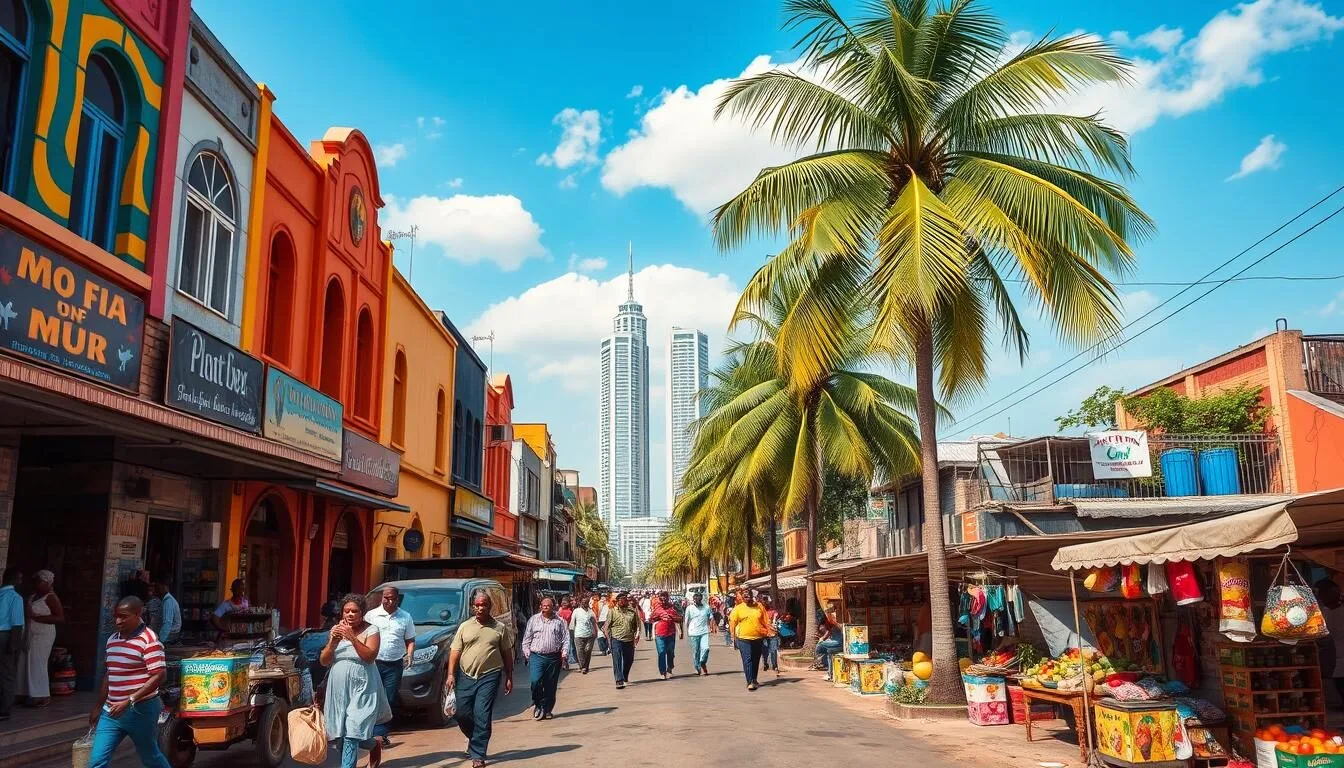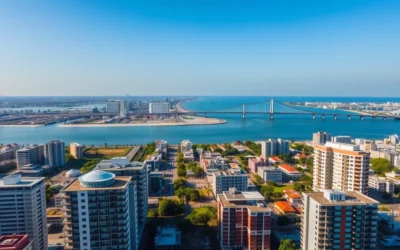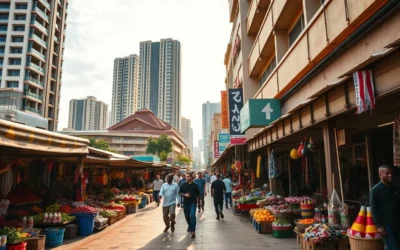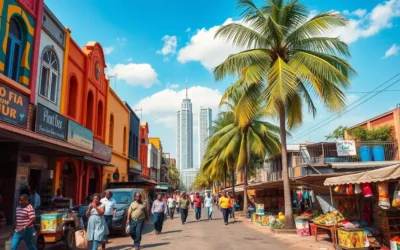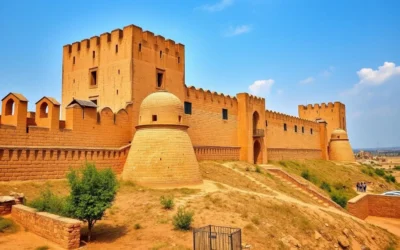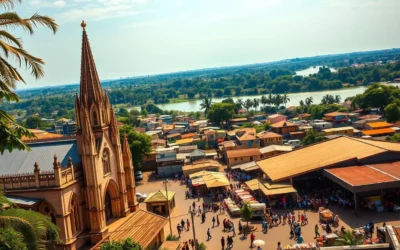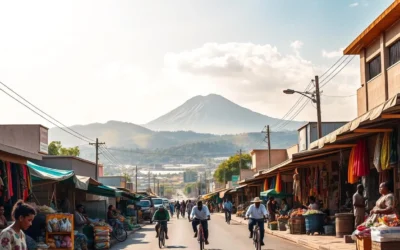Nigeria’s commercial capital, famed for its bustling economy, vibrant culture, and major port operations.
—
2. Kano, Kano State – Population: ~4,910,000
A historic Hausa trade center known for its ancient walls, textiles, and vibrant markets.
—
3. Ibadan, Oyo State – Population: ~3,649,000
Once Africa’s largest city, known for academic institutions and expansive metropolitan area.
—
4. Abuja, Federal Capital Territory – Population: ~2,690,000
Nigeria’s purpose-built capital, known for its sweeping boulevards, government buildings, and rapid growth.
—
5. Port Harcourt, Rivers State – Population: ~2,120,000
Key oil and gas hub in the Niger Delta, known as the “Garden City” for its greenery.
—
6. Kaduna, Kaduna State – Population: ~1,850,000
Industrial and military center with rich cultural diversity and historical sites.
—
7. Benin City, Edo State – Population: ~1,782,000
Home to historic bronze art from the Kingdom of Benin and cultural heritage.
—
8. Onitsha, Anambra State – Population: ~1,553,000
Major commercial river port city, famous for its large-scale markets.
—
9. Aba, Abia State – Population: ~1,160,000
Industrial center noted for textiles, shoes, and contrasting urban dynamics.
—
10. Maiduguri, Borno State – Population: ~1,110,000
Capital of Nigeria’s northeast, known historically for trade and recently as a security focus.
—
11. Ilorin, Kwara State – Population: ~1,080,000
Educational hub and convergence of Yoruba, Fulani, and Nupe cultures.
—
12. Sokoto, Sokoto State – Population: ~1,040,000
Religious and historical center of Islamic traditions in northern Nigeria.
—
13. Jos, Plateau State – Population: ~1,040,000
Known for its cooler climate, scenic plateaus, and cultural festivals.
—
14. Zaria, Kaduna State – Population: ~980,000
Educational city famous for Ahmadu Bello University and historic heritage.
—
15. Enugu, Enugu State – Population: ~950,000
Coal-mining capital with a vibrant arts and entertainment scene.
—
16. Warri, Delta State – Population: ~910,000
Oil-industry city noted for its Ijaw heritage and economic importance.
—
17. Oyo, Oyo State – Population: ~736,000
Historic capital of the old Oyo Empire, rich in Yoruba culture.
—
18. Abeokuta, Ogun State – Population: ~735,000
Renowned for Olumo Rock and historical significance in Yoruba land.
—
19. Akure, Ondo State – Population: ~730,000
Capital of Ondo State, known for cocoa production and Ondo culture.
—
20. Bauchi, Bauchi State – Population: ~694,000
Home to Yankari National Park and rich natural diversity.
—
21. Katsina, Katsina State – Population: ~670,000
Historic Hausa city with strong cultural heritage and trade history.
—
22. Osogbo, Osun State – Population: ~645,000
Famous for the annual Osun–Osogbo Sacred Grove festival.
—
23. Gombe, Gombe State – Population: ~560,000
Regional administrative center near scenic landscapes.
—
24. Ile-Ife, Osun State – Population: ~560,000
Spiritual Yoruba cradle, famed for ancient history and bronze artwork.
—
25. Ajegunle, Lagos State – Population: ~550,000
Dense suburban area known for music culture and urban energy.
—
26. Owerri, Imo State – Population: ~545,000
Capital of Imo State, known for nightlife and educational institutions.
—
27. Calabar, Cross River State – Population: ~540,000
Eco-tourism hotspot, famed for annual Carnival and historic slave-trade heritage.
—
28. Ebute Ikorodu, Lagos State – Population: ~536,000
Bustling market and suburban hub northeast of Lagos.
—
29. Okene, Kogi State – Population: ~479,000
Ethnic Ebira cultural center and agricultural town.
—
30. Ikare, Ondo State – Population: ~465,000
Agricultural city known for cocoa and crafts.
—
31. Yola, Adamawa State – Population: ~460,000
Historical northeastern city divided between old and new urban areas.
—
32. Uyo, Akwa Ibom State – Population: ~437,000
Capital of Akwa Ibom, thriving in petrochemicals and urban growth.
—
33. Ado Ekiti, Ekiti State – Population: ~435,000
Educational town in southwestern Nigeria, known for teaching excellence.
—
34. Ogbomoso, Oyo State – Population: ~433,000
Grassroots city with historic ties to Yoruba settlements.
—
35. Minna, Niger State – Population: ~425,000
Administrative capital of Niger State with regional culture.
—
36. Lekki, Lagos State – Population: ~401,000
Coastal suburban area known for upscale developments and beaches.
—
37. Bida, Niger State – Population: ~400,000
Historical Nupe city known for crafts and pottery.
—
38. Makurdi, Benue State – Population: ~390,000
Capital of Benue State, a center for agriculture in the Middle Belt.
—
39. Ondo, Ondo State – Population: ~375,000
Commercial city known for cocoa and southwestern cultural life.
—
40. Umuahia, Abia State – Population: ~370,000
Capital of Abia State with agricultural and administrative prominence.
—
41. Yenagoa, Bayelsa State – Population: ~365,000
Capital of Bayelsa State, located in the oil-rich Niger Delta region.
—
42. Gboko, Benue State – Population: ~365,000
Strong Tiv cultural base and agricultural economy.
—
43. Ijebu-Ode, Ogun State – Population: ~365,000
Historic Yoruba town recognized for its annual Ojude Oba festival.
—
44. Ugep, Cross River State – Population: ~360,000
Large Ekpefsu community known for cultural exhibitions and festivals.
—
45. Nnewi, Anambra State – Population: ~355,000
Major industrial hub known for automotive parts manufacturing.
—
46. Shagamu, Ogun State – Population: ~350,000
Jute and timber trading town within Ogun State’s industrial belt.
—
47. Epe, Lagos State – Population: ~340,000
Northeastern Lagos hub known for fishing and traditional lifestyles.
—
48. Iwo, Osun State – Population: ~330,000
Educated southwestern town with strong Islamic educational tradition.
—
49. Nsukka, Enugu State – Population: ~320,000
University town known for its vibrant academic life.
—
50. Oshogbo, Osun State – Population: ~310,000
Cultural heart of the Osun people and site of UNESCO-listed sacred grove.
